The Russian economy is overcoming another round of difficulties, one of which is the weakening of the national currency against the dollar. What is the reason for the fall of the ruble? Is this a systemic phenomenon or a speculative effect? What will be the consequences for ordinary citizens and businesses?
Pessimistic forecast
According to some analysts, the value of the US dollar by the end of 2014 could rise to 37-40 rubles (or it will be the average annual exchange rate of the American currency). The main reason for the weakening of the Russian banknote is called the deterioration of the national economy. Experts who support such a pessimistic forecast also believe that the already low dynamics of GDP will continue to decline, and capital will flow out of the country.

The positions of the ruble, according to pessimistic analysts, will weaken not only against the dollar, but also against other major world currencies. There is also a point of view that in the Russian economy there is now a period of stable devaluation of the ruble due to a deterioration in the balance of payments. According to analysts, the US Federal Reserve policy may contribute to the deterioration of the position of the Russian currency, which during 2014 can continue to reduce monetary impact on the economy, and in 2015 begin to increase the refinancing rate.
The opinion of traders
Professionals in the field of foreign exchange operations believe that the position of the ruble against the dollar is not worse than that of other currencies. The market pressure, according to traders, was also experienced by the Australian dollar, the Argentine peso, as well as the national currency of Turkey - the lira. All of them, like the ruble, are the so-called "raw" money. At the end of 2014, the dollar, according to trade experts, may cost 34-35 rubles, the euro - about 45-46 units of the Russian currency. During the year, however, fluctuations may occur.
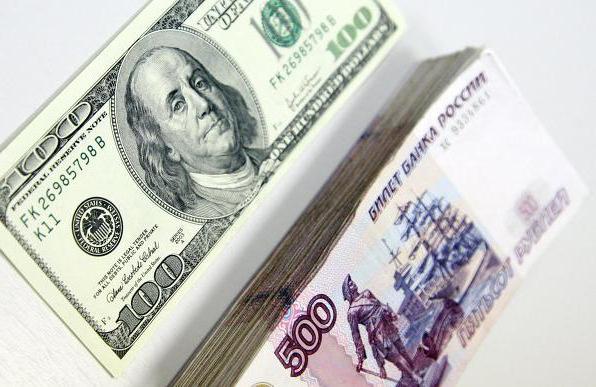
The main reason for the depreciation of the ruble, traders believe, is the global reorientation of investment flows - capital is withdrawn from emerging markets, to which Russia belongs, and invested in the economies of developed countries. This trend may remain relevant in the coming years. At the same time, the weakening of the national currency of the Russian Federation, as financial experts believe, can be strongly felt by citizens: a high probability of rising consumer prices.
Opinion from the scientific community
Some experts from among economists believe that the depreciation of the ruble in 2014 will become protracted. As a result of this, the decision of the Central Bank to minimize regulation of the foreign exchange market may be revised. However, once the ruble exchange rate stabilizes, the Central Bank may again weaken control over trading. Very much in the national monetary policy, experts believe, depends on the correct interpretation and understanding of economic growth. For example, to talk about the growth of the real economy on the example of developed countries, according to scientists, there is no reason, since there is too expensive labor.
Artificial growth due to the accumulation of equity investments is, as some experts believe, a “soap bubble” that will burst over time. However, for Russia, according to scientists, economic growth can be quite tangible, and it is precisely the weakening of the currency that is the real factor in stimulating it. With the fall of the ruble, exports increase, while investors increase profits (however, confidence in the market may also decrease).
Upbeat scenario
Despite the abundance of negative scenarios regarding the exchange rate of the ruble against the dollar and its impact on the Russian economy, there is quite an optimistic view of the situation among economists. There is a version that in 2014 the eurozone, which is the main foreign trade partner of the Russian Federation, will get rid of some crisis phenomena characteristic of past years. The economies of countries where the official currency is the euro can grow by more than 1% in 2014.
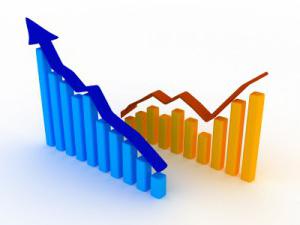
This may lead to an increase in Russian exports of raw materials, as well as to an increase in the price of them. If this happens, the trade balance of the Russian Federation will increase, and after it the outflow of foreign capital will slow down. As a result, the ruble / dollar exchange rate will also receive support. According to such an optimistic scenario, Russia's GDP growth in 2014 may exceed 2.5%, and the dollar exchange rate will not exceed 33 rubles. Thus, a forecast is given when the ruble decline ends: within the limits of 2014.
Retrospective
Among economists there is a point of view that the depreciation of the ruble against the leading world currencies is a completely new phenomenon and absolutely natural for the Russian economy. Even if we do not take into account the crisis of 1998 , when the national banknote of the Russian Federation fell several times against the dollar, it is enough to recall the recession of the economy in 2008-2009. Then the Russian currency underwent no less severe devaluation than in 2014. However, as further developments showed, the ruble confidently won back the positions of the dollar and the euro over the next few years.
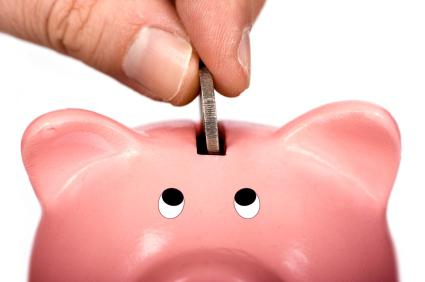
One can also recall foreign exchange trading in the fall of 2012 - at that time the exchange rate was characterized by very high volatility, many experts predicted an imminent fall of the ruble, but this did not happen then. Today, the Russian currency has fallen in price, but this, based on the experience of past years, may not give reason to draw far-reaching conclusions on the further development of the national economy. In 2008-2009, the economy had specific reasons for the fall of the ruble. 2014 may reveal other factors affecting the exchange rate of the Russian currency.
Trends in Developing Countries
There is an opinion among economists that the ruble behaves in foreign exchange trading in much the same way as the signs of other developing countries, primarily the BRICS states (which include Brazil, India, the Russian Federation, China, and sometimes South Africa). The fact is that now there is a global outflow of investment by foreign investors from these economies. National currencies are weakening, since there is a good reason for the fall - the ruble, real, yuan or rand does not matter - a common factor for the countries of the whole group. Russia, therefore, is also losing attractiveness to foreign capital.

The outflow of investments is also associated with the fact that the US Federal Reserve is gradually tightening its monetary policy, reducing the issue of unsecured dollars and increasing domestic loan rates. Following the example of the world's leading economies, other developed countries are “tightening their belts”. Investors, seeing this trend, are imbued with great confidence in these markets and prefer to channel capital there rather than to developing countries. Economists also note that the currencies of the BRICS countries are not so much weakening as the dollar is strengthening due to the improvement of the US market.
Internal causes of the weakening ruble
The depreciation of the ruble, as some experts believe, is caused not by external, but by internal causes. Firstly, due to the active withdrawal by the Central Bank of Russia of licenses from private banks - in 2013 this procedure was carried out in respect of 20 financial institutions. The most resonant precedent is the closure of Master Bank, one of the largest in the country. Secondly, the Bank of Russia decided to gradually release the ruble into “free float”.
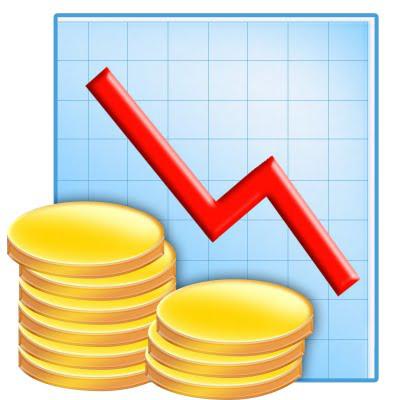
The reason for this is the desire to stimulate the development of the country's industry, which is not easy to maintain profitability in export. A “weak” ruble can significantly reduce the cost of Russian goods and make domestic production more competitive. Some economists believe that the depreciation of the national currency of the Russian Federation is beneficial to the authorities: loans for government bonds are taken in rubles, and oil revenues are calculated in dollars. With the growth of the dollar, the state will receive more national currency to pay interest on bonds.
The consequences of the weakening ruble
What threatens the fall of the ruble? Despite the fact that the weakening of the currency is, first of all, a macroeconomic indicator, the consequences of this phenomenon can be felt by ordinary citizens. According to some experts, the depreciation of the national Russian currency may lead to higher prices for imported goods (especially for electronics, cars, medicines, clothes, as well as manufactured goods, the raw materials for the manufacture of which are purchased abroad).
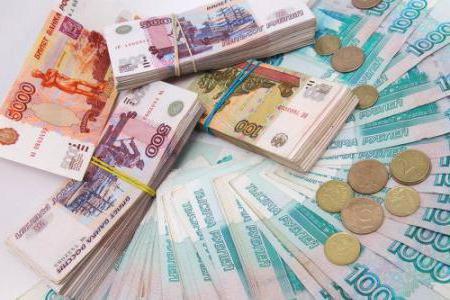
The rise in prices in these segments, according to analysts, can reach 15%. In addition, holidays for Russians abroad will rise in price (especially in developed countries). The prices of airline tickets and hotels are mostly expressed in dollars, and their nominal value, despite currency fluctuations, remains unchanged, which means that the actual amount of tourist expenses when converted to Russian currency increases. Citizens, therefore, cannot be indifferent to such a phenomenon as the fall of the ruble. What will further weaken the course of the national banknote of the Russian Federation, economists explain quite intelligibly.
Fed Factor
As noted above, there is a theory according to which the ruble / dollar exchange rate directly depends on the policy of the US Federal Reserve. Now this financial institution is cutting back the so-called “softening” program, when the printing press issued unsecured dollars. The Fed is reducing the purchase of bonds and mortgage contracts. The new leadership of the Federal Reserve System promises a flexible approach to working with this program. This financial organization has certain changes in its relationship with the government. If years earlier the Fed had to convince Congress of the need to increase the ceiling of public debt, now it does not make sense - the American parliament has the right to change the ceiling at any time. This circumstance, economists believe, helps reduce the risks of the American economy from the actions of the Federal Reserve System. Thus, the US market has good chances of stabilization and, as a result, a stronger dollar in international currency trading.
Pros and cons of ruble depreciation
The fall of the ruble is a phenomenon that does not always negatively affect the economy. There are pros and cons to this phenomenon. Among the indisputable advantages is an increase in the income of exporting companies and, as a result, an increase in tax payments to the Russian budget. Import substitution is stimulated - the price of foreign goods rises, and it becomes more profitable to buy domestic products. This contributes to economic growth. In turn, to understand what the ruble exchange rate threatens, it is worth recalling what the country's external debt is. This is the money that residents borrow abroad - usually in dollars. Therefore, the main minus of the weakening of the Russian currency is the increase in the burden on such borrowers. Russia's external debt now amounts to hundreds of billions of dollars (according to some experts, it has already exceeded the country's international reserves). Long-term and significant weakening of the ruble is becoming unprofitable for companies (and especially for commercial banks), which owe foreign creditors.
Bank forecasts
The largest Russian and foreign banks are also trying to assess the fall of the ruble and to predict further dynamics of the national currency of the Russian Federation. It is worth noting that credit institutions are generally optimistic. Banks such as VTB Capital, Morgan Stanley, as well as Alfa-Bank, expect that by the end of 2014 the dollar will cost 35 rubles. Citi, Otkrytie, Uralsib see the ruble as significantly strengthened: the publications of these institutions featured figures between 32.3 and 34.5 units of the Russian currency for the US bank note by the end of the year. The forecast for the ruble exchange rate from HSBC (35.4 per dollar) and Renaissance (35.5) looks somewhat pessimistic. The greatest weakening of the Russian currency sees UBS (36.5). It is worth noting that between the forecasts of banks regarding the ruble exchange rate to another major world currency - the euro - there is also a significant difference - from 43.4 (Morgan Stanley) to 48.4 units of the RF banknote per euro (Citi).